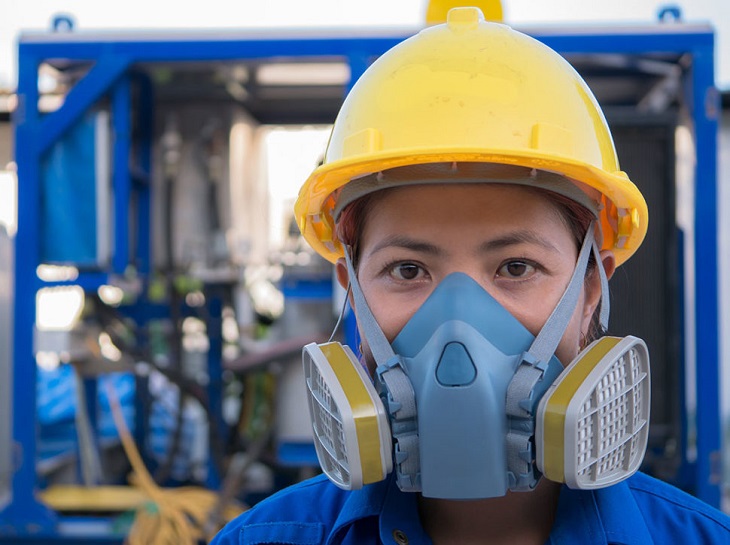Personal safety is always important. It doesn’t matter if you want to improve your safety at home, or at the office, or even in the field, there is always something more that can be done. Just as you should be aware of what kind of electric fuse you’re using, that’s how you should always be concerned with every type of safety. That’s the reason there are different types of safety gear, and each of them has its own use. Using all of these is very important because you never know what kind of risk you’re going to run into.
Importance of Personal Protective Equipment
When it comes to ranking safety in the home or at work, personal protective equipment is ranked rather low on the list. That’s not because it’s ineffective, but rather it’s the last stand against hazards. That means PPE is considered useful only when other preventive measures have failed. On top of that, each person needs to be properly equipped for PPE to function properly. With that said, PPE needs to be present everywhere because you never know what could go wrong. Many hazards occur because of poor electric security, which means the first step is finding the right electrical online stores to prevent anything like that from ever happening. If a hazard does indeed happen, then PPE is most likely your best chance of escaping intact and without injuries.
Head Protection
Keeping your head protected should be your number one priority in general. When a hazard occurs, everyone’s first instinct is to raise their hands over their heads so that any potential damage can be either prevented or mitigated. That’s why you should always have at least one helmet available at all times, and in the case of a larger office, definitely several. These will allow you to keep your head protected, just keep in mind that there are several sizes available and the helmets should be chosen to fit specific people’s heads. On top of that, helmets can be reasonably stylish too, as well as comfortable, so no need to worry about any of that.
Eye Protection
You need your eyesight arguably the most if you have to navigate a hazard. Being able to see where you’re going is very important when you need to escape from a hazard, and sometimes that might not be possible due to some hazardous situations. For example, if there’s a fire, you’re absolutely going to need safety goggles. These will prevent any smoke or residue from getting into your eyes, which means there will be no risk of any kind of damage to your eyes. It’s also worth noting that you need to keep in mind that welding goggles can be very helpful too, especially if you need to come into contact with bright lights or infrared radiation.
Hearing Protection
A lot of people seem to ignore the health risks that can occur if an area has very high sound levels. Eardrums can be very sensitive, which is why you should always have the proper safety equipment at hand. The most basic protection would be an earplug, which can work, but isn’t very efficient if the noise levels are too high. Earmuffs, on the other hand, are the ideal hearing protection. Even if you’re not in a hazardous situation, but rather on a very loud work floor, they’re always recommended because that way you won’t risk any hearing damage at all.
Respiration
As everyone knows, breathing is tremendously important, especially breathing correctly. What that means is not inhaling dangerous particles in hazardous areas. While the first move should be to remove those particles, if that’s not possible, wearing masks is a priority. There are multiple types of masks to choose from depending on the situation. Masks offer protection against fine dust and other dangerous particles. If the materials are truly toxic, use a full-face mask. This adheres tightly to the face, to protect the nose and mouth against harmful pollution. A significant number of the workforce inhales vapours, smoke, powder, or dust while performing their job, and wearing the correct mask is paramount.
Hands and Feet Protection
A lot of people aren’t aware of just how important gloves and safety shoes are. Hands and fingers can get injured very easily, and gloves can protect against vibrations, sharp materials, temperature changes, bacteriological risks, hazardous chemicals, and much more. Safety shoes and boots are the ideal protection for your feet. An antiskid sole is useful when working in a damp environment because a lot of industrial accidents are caused by tripping or sliding. On slippery surfaces, such as snow and ice, shoe claws are recommended. Special socks can provide extra comfort.
PPE and Coronavirus
The coronavirus and the pandemic have really taken their toll. Personal protective equipment is often very necessary to prevent the risk of infection, and that form of protection often comes from wearing a mask. Surgical masks, non-surgical masks, gloves, goggles, face shields, gowns, and N95 masks are considered the first and last line of defence when it comes to PPE and the coronavirus. The technical specifications used in creating such PPE define the minimum requirements for the product to ensure good quality, safety, and efficacy. The methods used to develop the technical specifications involve a review of the infection prevention and control COVID-19 guidelines, a review of PPE products available in the market, and PPE products approved by stringent regulatory agencies, and analysis of international, regional, and country standards on PPE. What that means is that such pieces of equipment are specifically designed to prevent any risk of infection almost entirely.




















